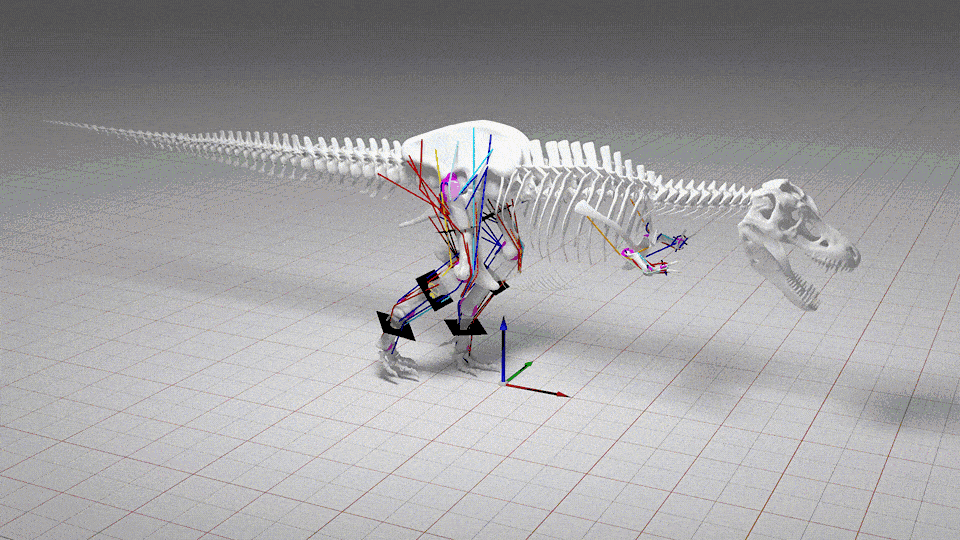When you buy through links on our land site , we may earn an affiliate direction . Here ’s how it operate .
sure giant , herbivorous dinosaur did n’t feed just plants — they also chowed down on rotted logs harbour shellfish , a unexampled discipline finds .
research worker made this startling dietary discovery after examining 10 different specimen of ossified dinosaur dung , known as coprolites , from the Kaiparowits Formation of Grand Staircase - Escalante National Monument in southern Utah .

A black, knobby crustacean shell embedded in a piece of fossilized dinosaur poop
" If we had find just one coprolite with crustacean pieces in it , that would have been interesting , " say study lead researcher Karen Chin , an associate professor and a curator of paleontology at the University of Colorado Boulder . " But the fact that we found coprolites that scatter out over at least 20 kilometers [ 12 miles ] at different stratigraphic grade — that really strengthen our evidence for this being a behaviour that these dinosaurs engage in . " [ Image Gallery : Parasite Eggs Lurk in Fossilized Shark Poop ]
The coprolite with the crustacean shell — including what might be a crab shell — are filled with the clay of molder wood , and date to between 76 million and 74 million age ago . Rotten forest is " kind of an strange dieting , " Chin tell , " but when you rot the Ellen Price Wood , it increase the availability of cellulose [ fiber ] in the woodwind instrument . rancher down in Chile have been known to open up up rotted log and their cattle just gravitate toward them and start prey on the rotted wood . "
It ’s possible that the dinosaurs ate the rotted Ellen Price Wood to get fiber , as well as fungus and insects living in therotted logs , Chin say . Of course , by eating the logs , the dinosaur were also swallowing the crustaceans living in the moistness , break down logs , but it ’s unclear whether the dinosaur were purposefully or accidentally eat the crustacean , Chin said .

The surface of a crustacean shell embedded in a fragment of fossilized dinosaur dung
However , reach that crustaceans are a good source of protein and calcium — a mineral postulate during eggshell production — perhaps female dinosaurs were intentionally eating the crustacean in preparation for laying egg , a behavior also seen in engender doll , Chin say .
It ’s unclear what eccentric ofLate Cretaceousdinosaur leave behind the poop , but the formation was fulfil with the fossils of duck - bill dinosaurs , or hadrosaurs . Those dinosaurs ' duck bills had teeth that were powerful enough to grind waste logs , and so the muck likely came fromGryposaurus , a 27 - foot - long ( 8 meters ) duck - placard dinosaur regain at the internet site , Chin said .
What ’s more , the researchers wanted to ensure that the dense crustaceans were digested , as fight back to wandering into the dinosaur fecal matter after the fact . But the evidence is fairly clean-cut that the dinosaurs take in the critters , Chin say .

" If the crustacean had just stray in there , even if it had been stepped on by a dinosaur , it would mostly be together , " Chin said . " Thesepieces of crabare scattered throughout the coprolite . "
Chin noted that this is the first example on phonograph record of " fairly large " crustaceous fragments in dinosaur coprolites . There are dinosaur coprolite from India turn back teeny , tiny ostracods — crustacean also known as source shrimp — but these ostracods are just 0.04 column inch to 0.08 inch ( 1 to 2 mm ) long , while the fragment from this study are as large as 1.1 column inch ( 3 centimeters ) across , Chin said .
The study " kind of turns our stereotype of industrial plant - feed dinosaurs on its caput , " say Steve Brusatte , a palaeontologist at the University of Edinburgh in Scotland who was not involved in the research .

" When you cut into the coprolite of a plant - eat dinosaur , you expect tofind only plants , so the crustaceans deep down are a material surprise , " Brusatte say .
Still , despite its shock value , the finding is not too unexpected , Brusatte said . " A plenty of herbivores today also ingest animals , sometimes accidentally or sometimes to affix their dieting . These dinosaurs were no different . "
The study was published online today ( Sept. 21 ) in the journalScientific Reports .

Original clause onLive Science .












